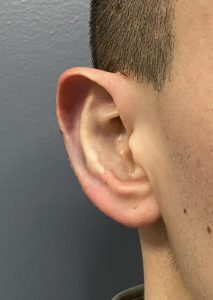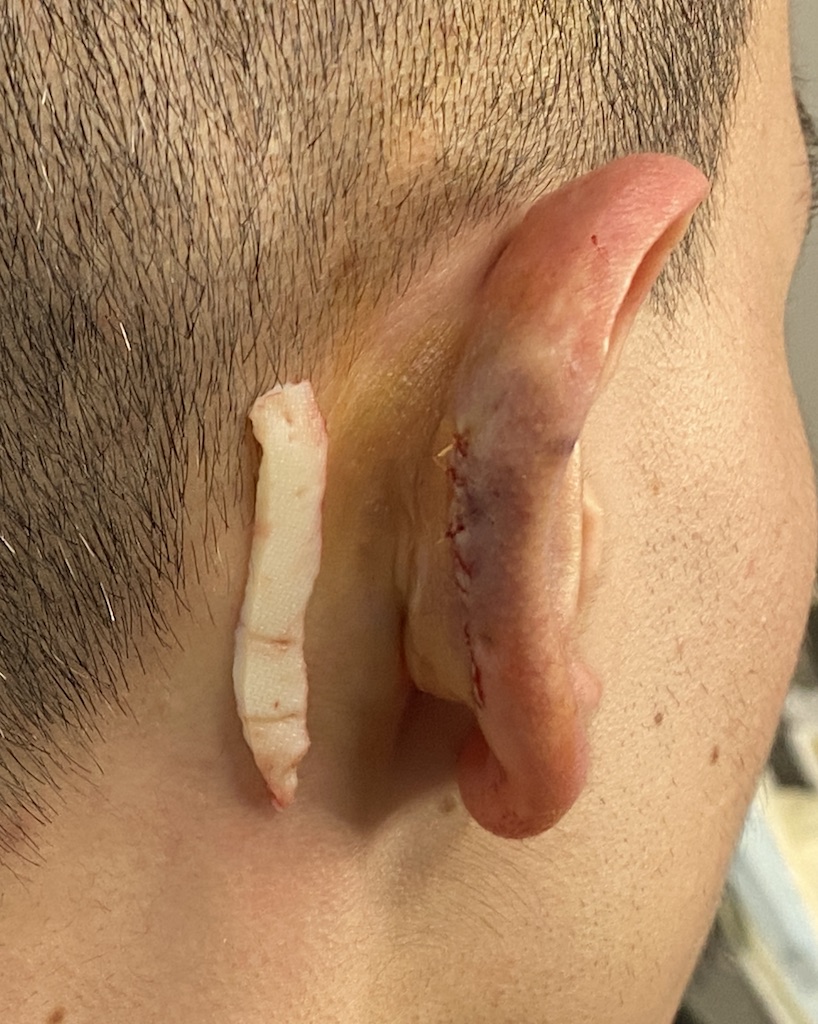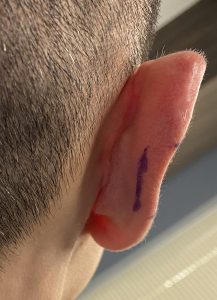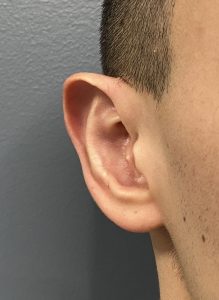Despite its small size the shape of the ear is made up of many components. The largest in surface area as well as its appearance is the outer helical rim. It starts at the superior attachment of the ear to the side of the head (helical root) and wraps around the entire ear until it reaches the earlobe. As a result it also creates the outer area of the ear with the most projection from the side of the head. Because of its visibility it is most aesthetically pleasing if it also has a smooth uninterrupted shape.
While some are born with a non-smooth (interrupted) helical rim otoplasty surgery can also cause an indentation of the helical rim at the conchal level. Such helical rim dents are often more soft tissue related than due to a cartilage deficiency. As a result fixing a helical rim indentation can be done with a soft tissue graft.


The helical rim indentation represents a tissue deficiency so some form of a graft is needed for correction. It could be cartilage or even an implant could be used. But a soft dermal graft to keep the suppleness of the helical rim seems to be best suited for this frequently manipulated area.
Dr. Barry Eppley
World-Renowned Plastic Surgeon





